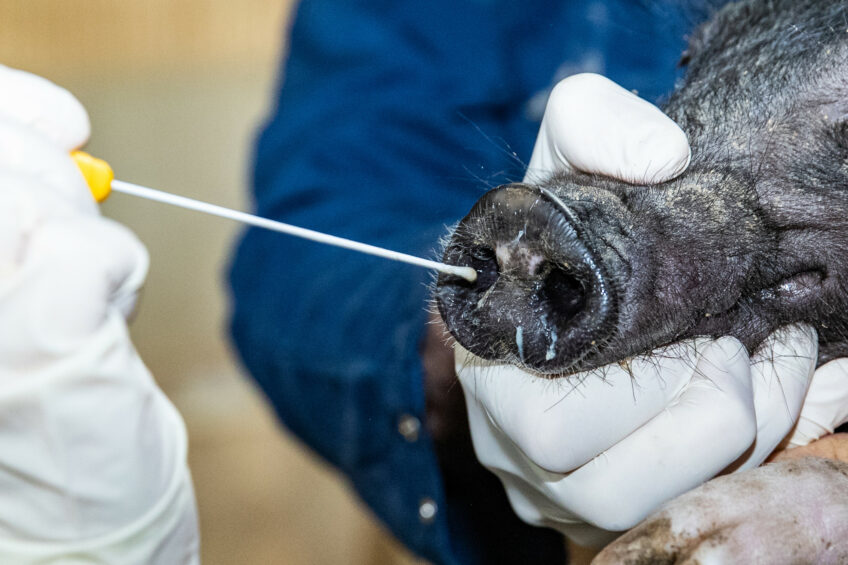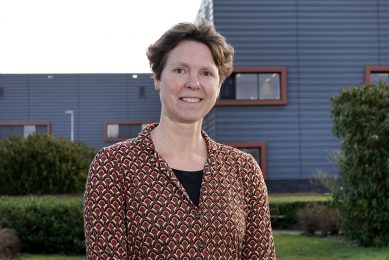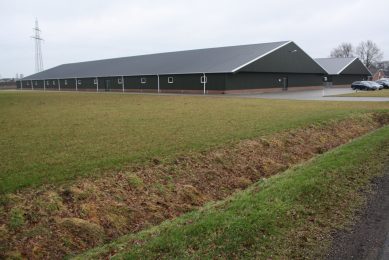Pig industry ought to be prepared for H5N1

The swine industry ought to be prepared for the emergence of highly pathogenic avian influenza (HPAI) to enter the domestic pig populations.
(Swine) influenza experts shared that message in various forms at the general meeting of the American Association of Swine Veterinarians (AASV), held 1-4 March in San Francisco, CA, United States.
The “holy cow” moment
In a presentation, Prof Andrew Bowman of The Ohio State University explained how the virus might behave differently than expected in pigs. He spoke of his “holy cow!” moment when the highly pathogenic avian influenza (H5N1) emerged and spread in cattle – which happened in March 2024.
He said, “The virus was making liars out of us veterinarians all the time. It behaved radically different than in poultry. Milk turned out to be screaming positive, but nasal swabs not so much. So we checked the teat cup liners and the parlour floor – they were positive.”
When there were 29 US cattle farms known to be infected, he went out to purchase milk at random sites. He said, 36% of the samples tested positive for H5N1. “We hinted that we had a much bigger problem.”
The good news was that the pasteurisation and treatment prior to sale had done its work. He added, “There was no viable virus in the samples. Nothing grew and all was inactivated. So what are we going to see in pigs? We do not know. That’s typically influenza. But I do not expect it to be another run-of-the-mill flu.”
Up until now, only 1 pig has been found to have contracted H5N1, but that was at a small scale farm in Oregon, in October 2024. That animal, as well as all other animals on the farm, were preventively culled. Other than that, so far HPAI has not been confirmed in pigs.
Pig shows can pose an H5N1 risk
Prof Bowman’s presentation revolved around a relatively unknown risk factor: swine exhibitions, all revolving around animals kept for contests, so considered as “non-commercial swine.” In a few geographical map illustrations, he showed clearly how those animals are being trucked around to state fairs and even interstate (“jackpot”) fairs, and that just one animal with (regular) swine influenza at one show can infect many others.
He and his team therefore set up a range of recommendations, initially to avoid the spread of (regular) swine influenza – but those will also help to minimise the risk of transfer of potentially more pathogenic varieties. The list included:
- Limiting show-to-show movement;
- Shortening the show’s length to 72 hours;
- Modifying entry procedures;
- Vaccinating the pigs;
- Limiting human exposure.
Optimising biosecurity to avoid H5N1 spread
Limiting human exposure was also key in a presentation called “Don’t be a fomite.” Prof Montserrat Torremorell of the University of Minnesota summed up what producers can do to make sure that they are not themselves the cause of the spread of swine influenza virus. After all, she said, the risk of humans transferring the virus is realistic, as farms share personnel. Pointing to the H5N1 positive cattle farms, she said, “In total 7% of the infected dairy farms had employees also working in poultry farms. So how often is that happening in pig farms?”
To establish the true effect of certain protocols, she spoke of some older research, but she also shared the outcomes of recent trials. In 2023 Prof Torremorell and her team evaluated whether human hands could be fomites of (regular) swine influenza virus. They tested 4 methods of hand sanitation protocols – methods to work as clean as possible.
- Water;
- Water and soap;
- Alcohol-based sanitiser;
- Disposable gloves.
Of these methods, she said, only the alcoholic sanitiser as well as the disposable gloves proved to be good enough, in all other cases still plenty of virus was transmitted. She added that it matters that farm staff need to know how to take off the disposable gloves correctly.
She also briefly referred to a study which is about to be published, in which various types of face masks were tested in comparison to no mask. Even though the team did not find any difference in effect between the different types of mask, she concluded: “Wearing a mask is better than not wearing a mask.”
Wearing masks is a sensitive topic though. She said, “Many people do not like wearing masks. If they had the choice, they liked better the surgical mask best.”
1 year of experience with H1N1 in cows
An interesting insight was given by Dr C. Scanlon Daniels, a swine veterinarian working for veterinary practice Circle H Headquarters in Dalhart, TX – one of the states where the earliest discoveries was made that HPAI had emerged in dairy cattle. Whilst the pig industry is certainly familiar with dealing with infectious diseases, he said, the pig industry can learn from “what has happened in the year since HPAI was identified in dairy cattle in the US.”
He summed up various H5N1 challenges that might be ahead:
- Unclear what rules apply if HPAI emerges in new non-livestock species;
- Once samples are known to be positive for H5N1 antigen, many requirements related to storage, handling and testing come into play;
- Overlapping federal and state jurisdiction of animal health;
- Economic significance of HPAI to dairy producers has not been great enough to stimulate much independent industry action;
- Disproportionate impact to poultry producing neighbours. In case of H5N1, cows “just” cannot be moved, yet a layer facility will have to be depopulated;
- Uncertain impact on public health;
- Confusion regarding the emergence of different influenza clades.
Other speakers in this session included Dr Philip Gauger, Iowa State University; and Dr E. Mahan-Riggs, Iowa.









